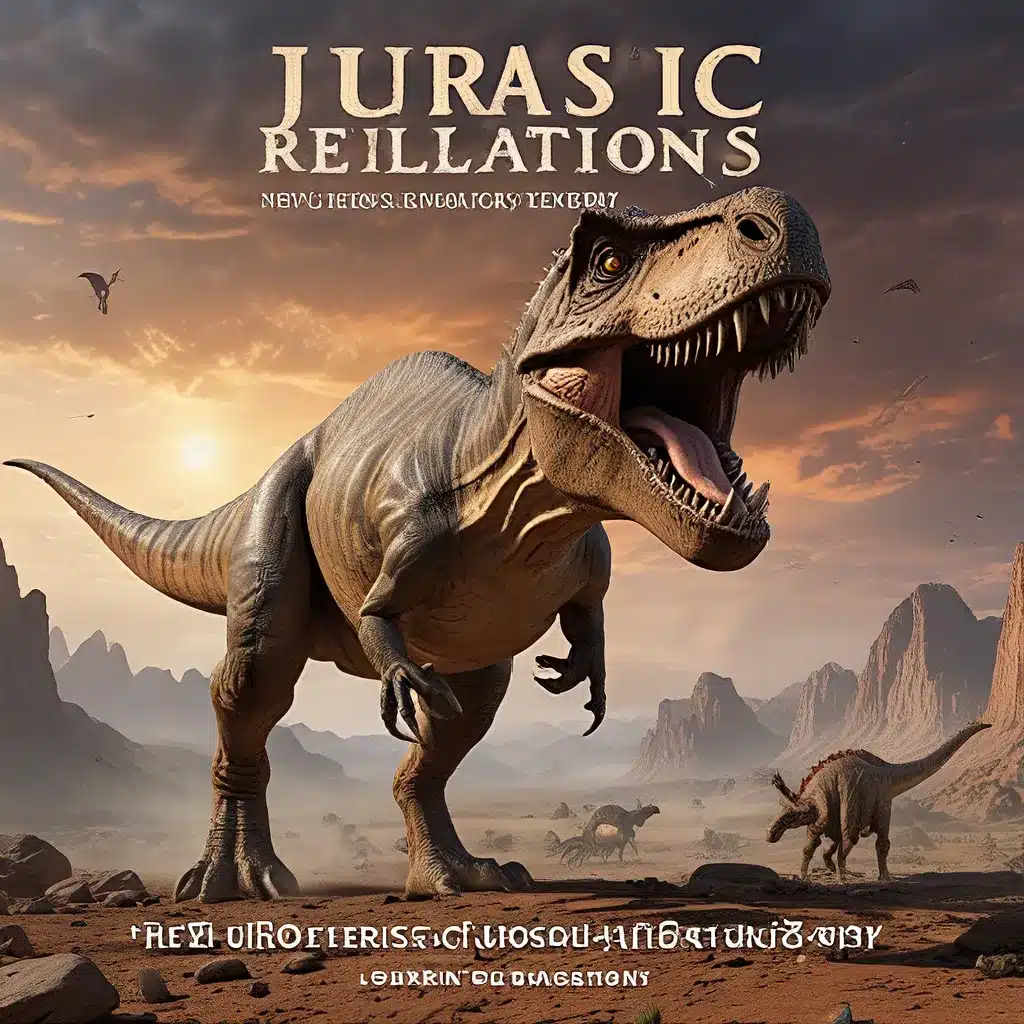
Uncovering the Mysteries of Prehistoric Creatures
The world of dinosaurs has long fascinated scientists, historians, and the general public alike. From the towering Tyrannosaurus rex to the graceful Pteranodon, these ancient creatures have captivated our imaginations and challenged our understanding of life on Earth millions of years ago. Recent advancements in paleontology and evolutionary biology have shed new light on the behaviors and lifestyles of these enigmatic beasts, challenging long-held assumptions and sparking exciting new theories.
Decoding Dinosaur Diets and Hunting Strategies
One of the most intriguing aspects of dinosaur research is the ongoing effort to unravel the complexities of their dietary habits and hunting strategies. Recent discoveries have challenged the traditional view of dinosaurs as simple, one-dimensional creatures, revealing them to be highly adaptable and sophisticated predators.
Paleontologists have discovered evidence of specialized feeding adaptations in various dinosaur species, suggesting that these ancient animals were far more diverse in their dietary preferences than previously thought. For example, the discovery of tooth structures designed for slicing and shredding plant matter has led to a better understanding of the herbivorous dinosaurs’ diets, while the presence of serrated teeth and powerful jaws in carnivorous species has shed light on their hunting tactics.
Furthermore, the analysis of fossilized dung and stomach contents has provided valuable insights into the specific foods consumed by different dinosaur species, ranging from vegetation to small mammals and even other dinosaurs. These findings have challenged the notion of a one-size-fits-all approach to dinosaur feeding, revealing a complex web of interspecies interactions and adaptations.
Uncovering Dinosaur Social Behaviors
Alongside the exploration of dinosaur diets and hunting strategies, researchers have also made significant strides in understanding the social behaviors of these ancient creatures. The discovery of nesting sites and trackways has provided evidence of complex social structures, with some species potentially exhibiting parental care, cooperative hunting, and even herd-like behavior.
One particularly intriguing finding is the discovery of dinosaur “nurseries,” where researchers have uncovered clusters of fossilized eggs and young dinosaurs, suggesting that certain species may have engaged in communal nesting and cooperative rearing of their young. These insights have challenged the traditional view of dinosaurs as solitary, aggressive animals, painting a more nuanced picture of their social dynamics and the potential for complex cognitive abilities.
Advancements in Dinosaur Locomotion and Movement
In addition to the revelations about dinosaur diets and social behaviors, recent research has also shed light on the biomechanics and locomotion of these ancient creatures. By analyzing fossilized footprints, skeletal structures, and muscle attachments, scientists have gained a deeper understanding of how dinosaurs moved and interacted with their environments.
For instance, the discovery of feathered dinosaurs has challenged the long-held assumption that these prehistoric beasts were solely terrestrial creatures, suggesting that some species may have possessed limited flight or gliding capabilities. Additionally, the analysis of leg and foot structures has provided insights into the speed and agility of different dinosaur species, with some species potentially capable of bipedal running or even sustained galloping.
These advancements in our understanding of dinosaur locomotion have not only expanded our knowledge of their physical capabilities but have also informed the development of modern robotics and biomimicry, as engineers seek to emulate the efficient and innovative movement strategies of these ancient creatures.
Uncovering the Mysteries of Dinosaur Extinction
Perhaps the most enduring and captivating aspect of dinosaur research is the ongoing quest to unravel the mysteries surrounding their ultimate demise. The K-T extinction event, also known as the Cretaceous-Paleogene extinction, which occurred approximately 66 million years ago, wiped out the majority of dinosaur species, leaving only the avian dinosaurs (modern birds) to survive.
While the asteroid impact theory proposed by scientists like Luis Alvarez is widely accepted as the primary driver of this mass extinction, recent research has uncovered a more nuanced and complex picture of the events leading up to and during this pivotal moment in Earth’s history.
Emerging evidence suggests that the Deccan Traps volcanic eruptions in present-day India may have played a significant role in destabilizing the global climate and ecosystems, potentially contributing to the dinosaurs’ downfall. Additionally, some researchers have proposed that the gradual environmental changes and ecological shifts leading up to the K-T event may have rendered certain dinosaur species more vulnerable to the catastrophic impacts of the asteroid strike.
As scientists continue to unravel the intricate web of factors that led to the extinction of these mighty creatures, our understanding of the past, present, and future of life on Earth continues to evolve, inspiring new theories and fascinating insights that captivate the public’s imagination.
Conclusion: Embracing the Evolving Narrative of Dinosaur Science
The study of dinosaurs has always been a dynamic and ever-evolving field, with new discoveries and advancements consistently challenging our understanding of these ancient creatures. From the groundbreaking insights into their dietary habits and hunting strategies to the revelations about their social behaviors and locomotion, the world of dinosaur research continues to fascinate and inspire.
As we delve deeper into the mysteries of the Jurassic and Cretaceous periods, the narrative of dinosaur science is constantly being rewritten, with each new discovery shedding light on the complex and multifaceted nature of these prehistoric beings. By embracing this evolving narrative, we not only expand our knowledge of the past but also gain valuable insights that can inform our understanding of the present and future of life on our planet.
Ultimately, the study of dinosaurs remains a captivating and vital field of inquiry, one that continues to capture the imagination of scientists, historians, and the general public alike. As we navigate the ever-changing landscape of dinosaur research, we can look forward to even more exciting revelations and a deeper appreciation for the remarkable diversity and adaptability of these iconic creatures that once roamed the Earth.


